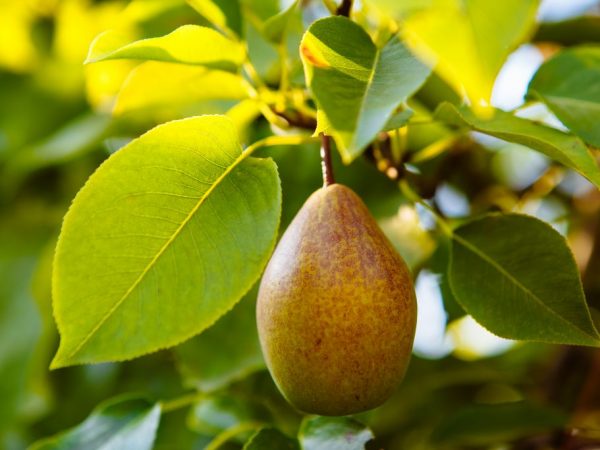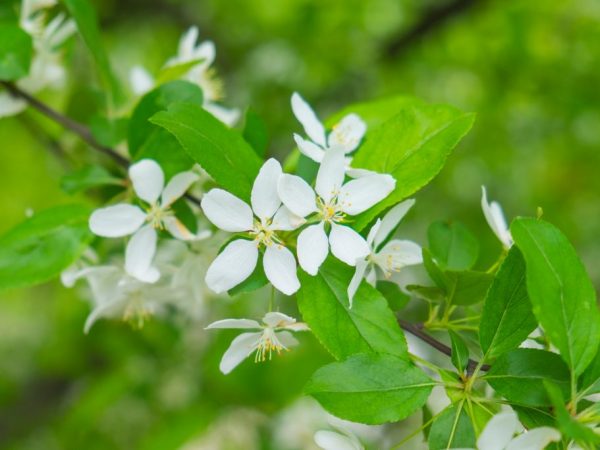Description of summer varieties of pears
Popular summer varieties of pears are unpretentious in care. Early maturing species are suitable for planting in any soil. The variety is grown in the warm climatic conditions of Ukraine, the Caucasus and central Russia.

Description of summer varieties of pears
A variety of early maturing crops
All types of horticultural crops are conventionally divided into summer, autumn and winter. If you choose a late hybrid for Russia, you can not guess at the time of its flowering, therefore, early summer crops are valued not only for tasty fruits, but also for an early ripening period.
Hybrids were bred by selection of different fruitful varieties - the resulting species takes root well and can withstand changes in ambient temperature. Their trees grow rapidly and produce a stable harvest every year.
Among the many summer species stand out:
- Clapp's favorite;
- Red Favorite;
- Lemon;
- Bashkir;
- Oily;
- Duchess;
- Esmeralda;
- pear Big summer.
Summer pear varieties have good endurance - they survive the harsh winters if the soil is fertilized correctly. For such species, proper care is needed, which includes watering, adding nutrients to the upper layers of the soil and trimming excess shoots. The selection of summer crops involves preparing a suitable plot of land for the rapid growth of the seedling.
general characteristics
Summer varieties such as Velikaya or Esmeralda are early varieties. The fruits reach removable ripeness until autumn. The average harvest time from such a tree lasts from a week to a crescent. If the summer is rainy, the harvest time is reduced. The summer pear variety is stored for a short time - up to a week in a cold dark room.
The pear called Klapp's Favorite ripens from late August to early September. She has an average winter hardiness. The first fruits appear on a tree in 4-5 years of regular watering and fertilization of the soil. The advantages of this type include self-fertility, immunity to common fungal diseases and high yields.
Description of the tree
Knowing the description of the variety, it is easier to draw up a plan for future planting. An early maturing culture is growing rapidly and needs free space. Bashkir pear reaches 4 m in height. The tree is medium-sized, the crown is thin, but the leaves are large. The bark of the trunk is slightly flaky. It is smoother - the bark turns dark brown over the years.
The crown is wide, pyramidal in shape. The average life expectancy is 40-50 years. An early ripe species grows actively only in the first 2 years, after which its lateral branches begin to grow. The color of the branches is dark gray and the wood is fragile. The fruits are formed on the ringlets. White inflorescences are large, during the flowering period there are many of them on the branches.
Description of fruits
Pear Oily or Big is distinguished by large fruits. They are juicy and tasty. Description of the appearance of the fruit:
- the skin is thin, but does not crack, even in the rainy season;
- the weight of one fruit is from 250 to 300 g;
- the skin is green, and when the fruit is ripe, it is yellow;
- a blush appears on each fruit as it ripens.
Large or Oily smooth to the touch. According to the description, the flesh of the fruit is white, firm and slightly veined. Seeds are small in size, dark in color. Juicy fruit quickly deteriorates, so pears are more often grown for their own needs, and not for sale. The Big Pear variety rarely cracks, and the pulp retains its aroma.
Growing and planting

The pear cannot be planted in the lowlands.
The Great Summer Pear variety is planted in early spring, as soon as the ground warms up. One-year and two-year seedlings are used. The prepared material is planted in the planting pit. The bottom of the pit is covered with fertilizers - this layer of nutrients will feed the seedling for several years. Before planting a tree, you need to dig up the nearby area well: the porosity of the soil increases, and with it the degree of moisture penetration increases.
For planting, a site in the lowlands is not used - it will collect water from the entire garden and stagnate (this phenomenon will lead to rotting of the root system). Other horticultural crops such as Saint Germain or Panna will be cross-pollinators for the young tree. Regular watering is established 2-3 weeks after planting the seedling, earlier the root system does not need water. Until the variety blooms, the soil at its root layer is not fertilized. Pruning is done in early spring.
Landing in the soil
Pears of the Oily Summer variety sit in ordinary soil. Avoid areas that are too moist or dry. Nitrogen and mineral fertilizers will help improve the quality of clay soil. It is better to choose a soil with a good drainage layer - such simple conditions will help the seedling in the first years of active growth. A seedling with elastic healthy shoots is selected. Before disembarking, it is carefully checked and washed. If the planting hole is prepared 2 weeks before the day of planting, the seedling is soaked in water for 3-4 hours.
Pear variety Big summer is pruned before planting - broken or rotten roots are removed. If it was not possible to plant a seedling in the spring, it is planted in the fall, but before the arrival of the first frosts. The depth of planting roots in the ground is 90-100 cm. Additionally, a peg is installed in the pit, which helps to anchor the young tree. Place the root collar 5 cm above ground level. The soil is poured on top of the root system and is well rammed. A roller is made around the seedling, which allows you to retain moisture around the rhizome. Immediately after planting, the tree is watered with 3-4 buckets of water.
Plant care
Garden crops that ripen early are regularly fed and watered. Also, the tree needs to form a crown. In autumn, the seedling is fed with mineral fertilizers, and closer to summer with phosphate-potassium mixtures. For adult crops, fertilizing the upper layers of the soil is ineffective, therefore, wells are made at a short distance from the tree, into which liquid fertilizer is poured. In the spring, early ripening crops are fertilized with nitrogenous substances. In dry weather, the roots and trunk are sprayed with fertilizers.
Summer Orlovskaya pear, like any early-ripening variety, is drought-resistant. One healthy tree has at least 10 liters of water. Irrigation takes place every 3 weeks. The older the tree gets, the less it needs watering. The number of irrigations is reduced, but the amount of water applied increases at a time). Increase watering during flowering, when the skin of the fruit is already yellow, and during severe drought. The last regular watering is carried out after harvesting - after that the tree is watered as the soil clod dries up. A tree is cut from the 2nd year - it is necessary to limit its growth in height. After that, the tree is pruned every 3 years - broken or diseased branches are removed.
Diseases and pests
Summer pears are insured against fungal diseases, but they can suffer from scab.To prevent such a disease, timely prophylaxis with Bordeaux liquid is carried out. Processing is carried out 1 p. per month.
Fruit rot, rust and powdery mildew may appear on the branches. Both juicy fruit and foliage suffer from pests. If fruit rot or powdery mildew appears, the tree is treated with chorus. Watch out for nearby crops in your garden that carry various diseases.
Conclusion
An early maturing species is chosen for its fast growth, stable yield and resistance to common diseases of horticultural crops.


